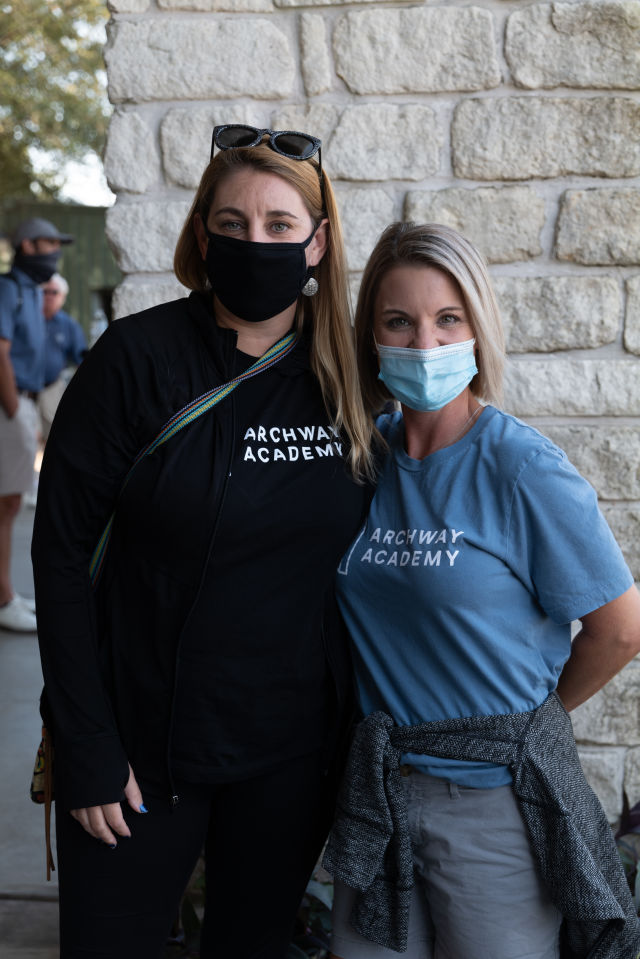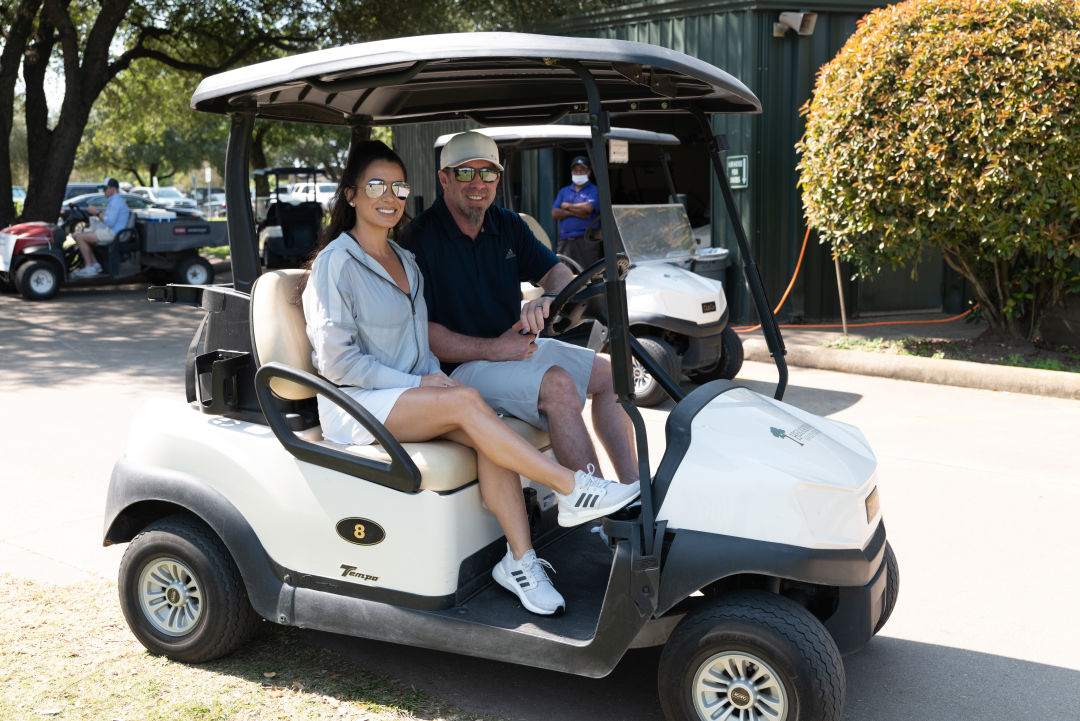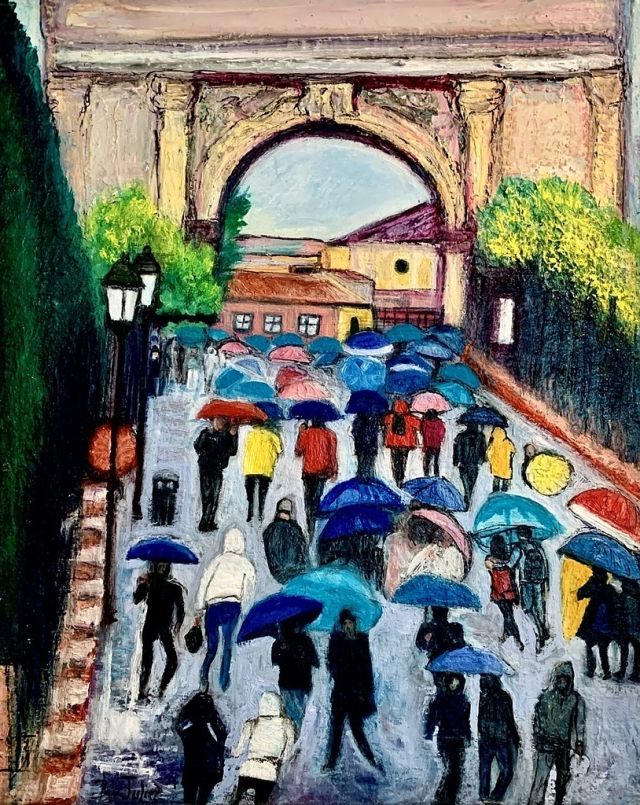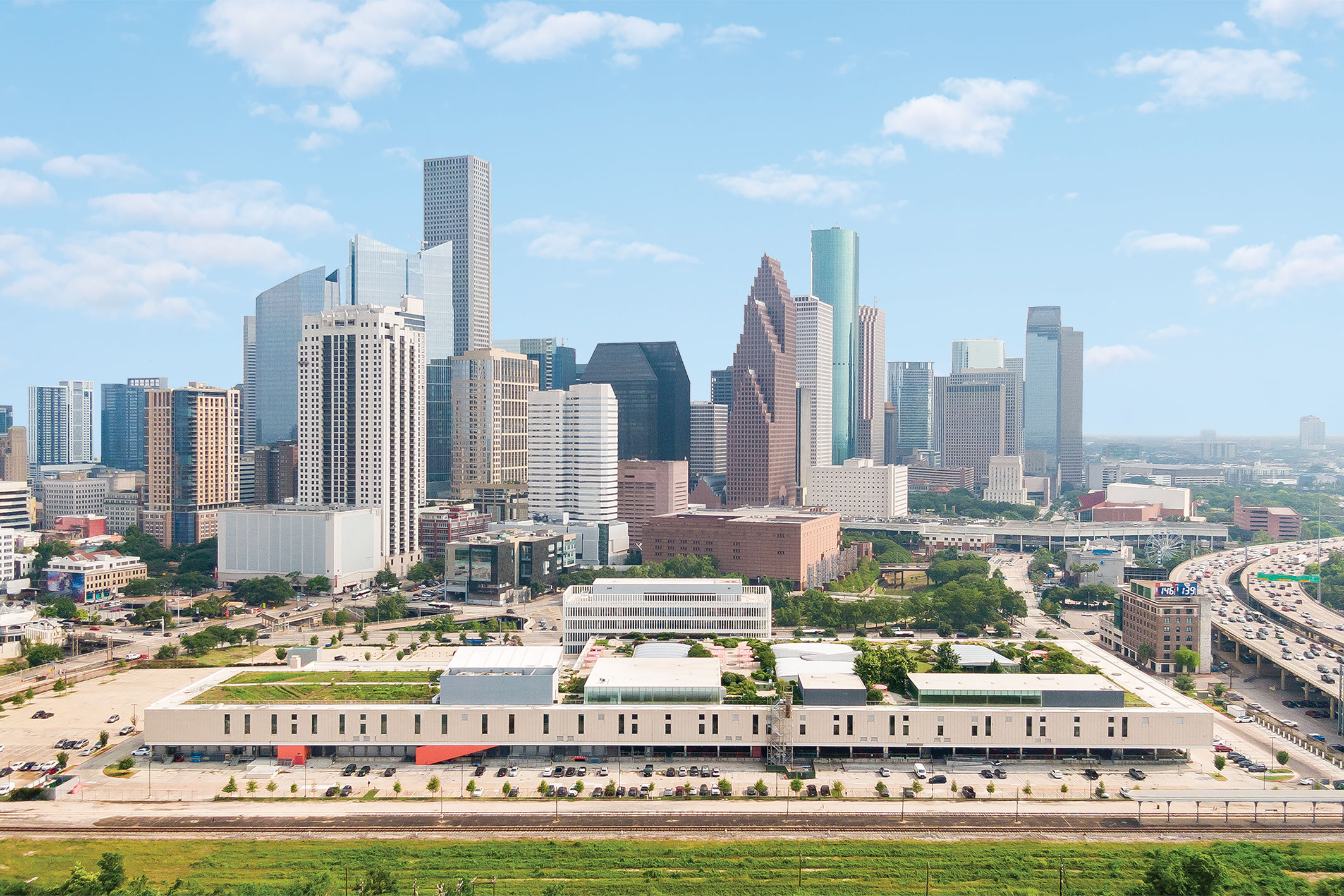How One Local High School Is Helping Teens in Recovery

Members of Archway Academy's 2020 graduating glass gather in a socially distanced circle on the school's campus.
Image: Courtesy of Archway Academy
Sasha Coles never expected to end up on the bathroom floor, but when one of her new students at Archway Academy, the largest recovery high school in the U.S., had a massive panic attack in the school restroom, she knew what she had to do. Drawing from her own experiences with anxiety, she laid down next to her student and walked her through calming exercises. The unconventional approach worked. “We ended up having a 45-minute conversation on the bathroom floor,”says Coles, executive director of the Houston-based school. “We used a whole lot of hand sanitizer when we got up.”
Almost everyone knows someone who’s struggled with substance use disorder or alcoholism, says Coles. With 7 percent of people in Harris County reporting illicit drug use in 2014, it's hard not to. In fact, the number of people ages 12 and older using illicit drugs has been rising since 2006, according a 2019 Houston Health Department morbidity and mortality report. Binge drinking is also a larger problem for young adults (ages 18–29), 21.8 percent of whom are more likely to imbibe four or more drinks in two hours than older adults.
The younger someone is when they start drinking or using illicit substances, the more likely they are to develop a dependence by age 21, according to the report. That's where Archway Academy steps in.

Image: Daniel Ortiz
One of only 45 recovery high schools in the country, Archway “primarily serves students with a substance use disorder and students that have a co-occurring mental health issue, whether that be depression, or anxiety, or ADHD, or an eating disorder, or self-harm,” says Coles. Students attend your typical classes, like English or math, but they also receive counseling and take recovery classes—they even have University of Houston social work students come in and teach psychology legend Brené Brown’s Daring Way program.
Families often come to Archway as a last-ditch effort, after trying other options like private or alternative schools, family monitoring, or even wilderness programs, says Coles. “Then, finally, they pick us."
All this month, Archway Academy has been hosting fundraising events, including a golf tournament on October 1 at Hermann Park Golf Course; a virtual luncheon with Astros Hall-of-Famer Jeff Bagwell—who is in recovery himself—as the keynote speaker on October 20; and The Art of Recovery HTX, an online art show and exhibit that showcases the work of local and national artists and their struggles with substance use disorder. The show ends this Friday, October 23. Check it out here.
We spoke with Coles about how the high school works, her own journey with substance use, and how the pandemic has impacted recovery.
How does a recovery high school differ from a traditional school?
“We offer heavy, heavy recovery, support, and mental health components to school, and it’s something that they receive every day. So, for example, if you’re a student at Archway, when you come to school in the morning at 8 o’clock, your first class is a recovery mental health wellness class instead of a traditional academic class or elective. All of our students have recovery coaches, clinicians, and people who facilitate as case managers that are helping to guide them and their families.”
How old are your students when they first come to Archway and how long do they stay?
A lot of students tend to be 16 or 17 when they get to Archway. There’s really kind of two different purposes that Archway can serve for a family. Sometimes, we’re meant to be a short-term re-grounding, helping them really find some roots in recovery; maybe we’re meant to be a semester or a one-year bridge for them, but they have something really important that they want to return to at their previous school. And then, there are times students come to us and we’re the only school they ever want to go to again, and they stay with us until they graduate from high school.
Is recovery different for adolescents than it is for adults?
What we know about young people is that they’re very social beings. Adolescence is probably the most significant time of social development in the entire lifespan. We’re all susceptible to peer pressure, but especially young adults. There’s sort of a natural gravitation towards what’s cool and what’s fun and what everyone else is doing, kind of that element of peer pressure, and so part of the magic of a recovery school is attempting to shift the peer pressure in a more positive direction, knowing that the kids are going to gravitate to whatever is considered cool within that community or within that group.
For the adult population, a lot of people hit a really hard rock bottom, where it’s like, maybe they get incarcerated, or their wife leaves them, or their children don’t speak to them, or they lose their job. Those are really significant life events that happen, that sometimes that’s the pain that motivates people to pick recovery. But with kids, their life is not set up in the same way where their bottoms tend to be like that. And that’s the goal. Wouldn’t it be great if people didn’t have to hit a horrid rock bottom before they decided to change their lives? For adolescents, we try to lift the bottom, so to speak.

Former Astros player Jeff Bagwell and his wife, Rachel, at Archway Academy's Annual Palmer Golf Tournament on October 1.
Image: Daniel Ortiz
Can you tell me how you came to work at Archway?
I got sober 18 years ago. I grew up in Bellaire and started drinking in middle school, and was diagnosed with an anxiety disorder in elementary school. So, I would say that my mental health challenges as a kid were more of the driving force behind why I got involved with drugs and alcohol, which is actually pretty common for people—an underlying mental health issue that becomes the driving force.
I was in my early 20s when I made the decision that drugs and alcohol would just not serve me. That if I was going to get my life together and my mental health together, recovery could be part of the plan. Drugs and alcohol could not be part of what I needed to manage panic disorder. My desire to be at Archway and beyond to just help these kids—you know, I am one of these kids. My story mimics their story. My drug and alcohol use started around the same time as theirs, so I think I can be an example for them. This is what it looks like if you choose recovery.
Along with yourself, most of the staff at Archway is either in recovery or has a loved one in recovery. How does that help the students?
I think it’s so good for them to have the people who are pushing them also be people who have some lived experience with it. It makes them more real. Sometimes they ask me really hard questions. Very personal questions. And I don’t always answer them, but sometimes I do. And I think it’s helpful when they know that I’m not asking them to do anything that I haven’t been willing to do. And that there’s probably not a lot they can say to me that would scare me or shock me or that isn’t already part of my story.
I think kids really appreciate when we just model the healthy behavior for them, and so it’s not about having to dive into some dark story in your past. It’s more just like, “Hey, I was diagnosed with a panic disorder in the fourth grade, but I want to walk through with you some of the tools that I’m using now as a safeguard against some of that.”

Image: Courtesy of Archway Academy
How did the Covid-19 shutdown last spring impact your recovery programming?
We transitioned some of our mental health services into the virtual format, but we kept a lot of our recovery support services in-person. So, what that meant is we literally drove all around the Greater Houston area, meeting with kids in their driveways while social distancing, or sitting in tailgate chairs in their driveways, having sessions. Because there’s no substitute for that in-person connection.
What did you learn in the spring that you’re applying to this fall semester?
One thing we learned is there’s just no substitute for in-person education. Even though this is a very technologically savvy generation, the kids are just not the same during virtual sessions. I miss hugging people, I miss coming up to campus every day, I miss the camaraderie, I miss the fellowshipping. Even when we did our small groups online, it just wasn’t the same. The intimacy was different, the connection feels different.
This interview has been edited and condensed for length and clarity.




